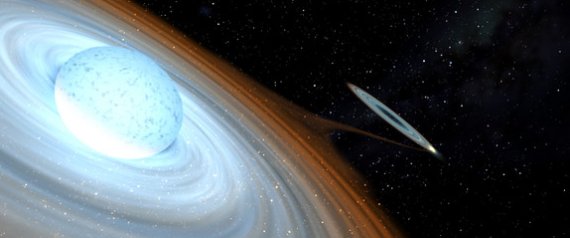Every black hole conceals a secret — the quantum remains of the star from which it formed, say a group of scientists, who also predict that these stars can later emerge once the black hole evaporates.
The researchers call these objects "Planck stars" and believe that they could solve a very important question in modern physics: the information paradox, or the question of what happens to information contained in matter that falls into a black hole.
Warping space and time
Black holes are regions of space so incredibly dense that nothing, not even light, can escape from them. Most are thought to form at the end of a big star’s life, when its internal pressure is insufficient to resist its own gravity and the star collapses under its own weight.
Most scientists believe that, since there is nothing to stop this collapse, eventually a singularity will form — a region where infinite densities are reached and Einstein’s general relativity ceases to be predictive.
But this "singularity theory" has flaws. Since the laws of physics no longer apply in a region of infinite density, no one knows what could possibly happen inside a black hole.
Every black hole conceals a secret — the quantum remains of the star from which it formed, say a group of scientists, who also predict that these stars can later emerge once the black hole evaporates.
The researchers call these objects "Planck stars" and believe that they could solve a very important question in modern physics: the information paradox, or the question of what happens to information contained in matter that falls into a black hole.
The idea could also finally reconcile quantum mechanics and Albert Einstein’s general theory of relativity that describes gravity, thus showing how a theory of quantum gravity might solve longstanding puzzles in the world of physics. [The Strangest Black Holes in the Universe]

No comments:
Post a Comment